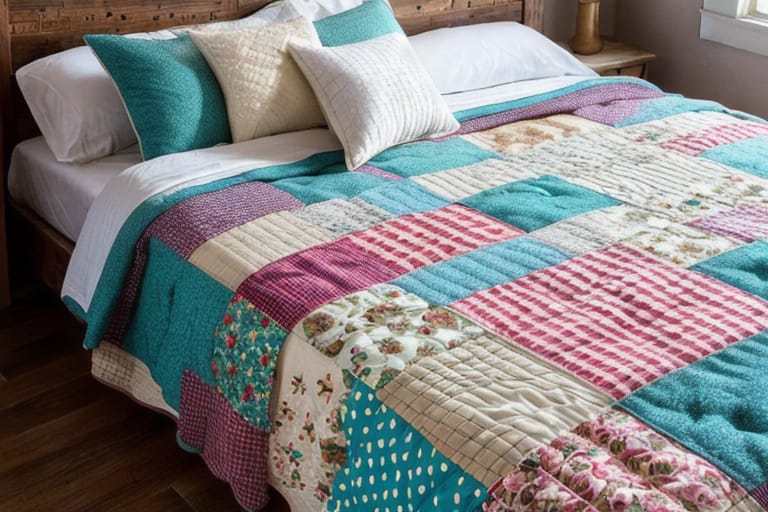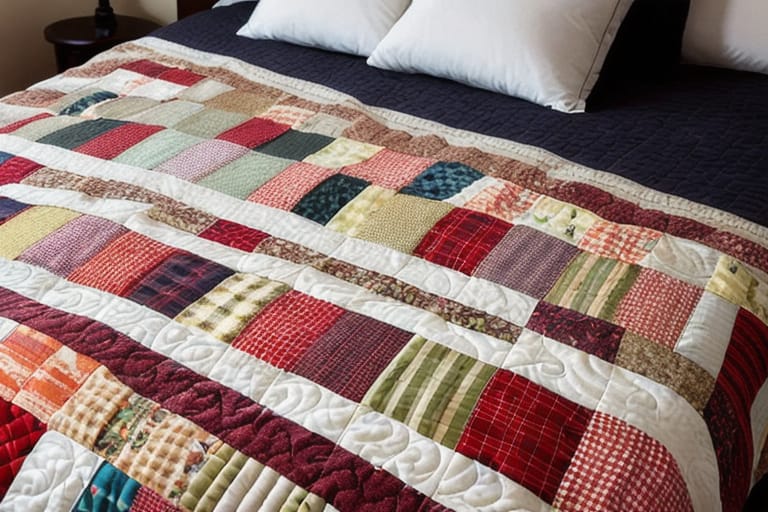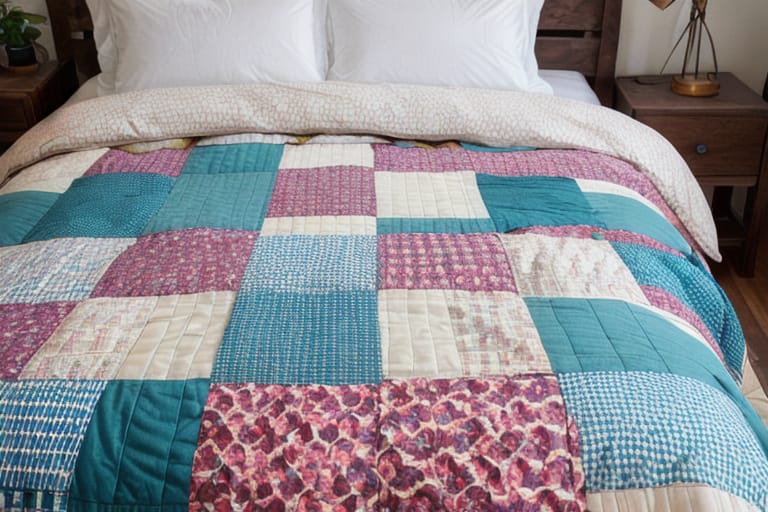When it comes to staying warm and cozy on cold winter nights, down comforters reign supreme for many people. Known for their lightweight yet highly insulating properties, down comforters trap body heat efficiently to keep you nice and toasty as the temperatures drop.
But how well do down comforters really retain warmth? What about comforters filled with less expensive synthetic materials instead of premium goose or duck down? And what exactly makes certain down comforters warmer than others in the first place?
This beginner’s guide covers everything you need to know about down comforter warmth and temperature regulation. You’ll learn how fill power, construction quality, and shell materials impact a down comforter’s ability to keep you warm. We’ll also provide tips for choosing the right warmth level, recommendations for top brands and models, plus advice on care and maintenance.
Let’s dive in to answer the essential question: do down comforters really keep you warm when it matters most?
What Makes Down So Warm in the First Place
Before examining how well down comforters insulate, it helps to understand what makes down such an exceptional natural warmth-retaining material.
- Down refers to the soft, fluffy clusters of insulation that sit underneath the exterior feathers of ducks and geese. This down layer helps birds maintain their high core body temperature.
- Down clusters provide unrivaled insulating performance because they can trap large volumes of air in relation to their weight. This creates substantial loft and fill power.
- The trapped air prevents body heat from escaping easily. Down is also highly compressible and breathable, providing warmth without overheating.
- No synthetic alternative can truly match genuine goose or duck down’s mix of impressive lightness, loft, and durability over time.
In short, down offers the best natural insulation on the market – which is why premium down comforters excel at keeping you warm and cozy all night.
Factors That Impact Down Comforter Warmth
While down itself provides exceptional insulation, other comforter elements also affect overall warmth levels. Choosing a down comforter is about more than just fill material – construction quality, fill power, shell fabrics, and other details play a major role as well.
Fill Power
Fill power refers to the volume one ounce of down occupies in cubic inches when fully lofted. This measures the “fluffiness” and insulation capacity of down clusters.
- Higher fill powers (600-900+) equate to greater loft, thermal efficiency, and durability over time
- Premium down comforters often have ≥700 fill power
- Lower fill down still insulates decently and can be very affordable
{{Image: down-fill-power-chart.png}} Down fill power levels determine insulation capacity – higher is warmer
Construction
How a down comforter is constructed impacts warmth retention and prevention of cold spots. Higher-end models use advanced baffle box stitching.
Baffle Box
- Vertical fabric walls create “baffles” to evenly distribute fill
- Retains maximum loft and prevents cold spots
- More expensive to produce
Sewn-Through
- Stitched directly through exterior and lining
- Can result in thin spots or shifting fill over time
- Usually found at lower price points
Well-constructed baffle boxes keep down evenly distributed for consistent, lasting warmth.
Shell Fabrics
The woven exterior shell fabric and inner lining also affect efficiency. Tighter thread counts offer greater down retention over years of use.
- High thread count cotton, microfiber, silk, etc. shells are preferable
- Special coatings can add water resistance without reducing breathability
Denser shell fabric construction prevents fill escaping and maintains insulation performance.
Understanding Down Comforter Warmth Ratings
Common down comforter warmth ratings by season suitability
One thing that confuses many shoppers is interpreting the warmth levels stated on down comforters. Terms like “ultra light”, “winter weight” and “all-season” can vary across brands.
Here’s a breakdown of the most common ratings:
Light Warmth
- Best suited for warmer climates or hot sleepers
- Lower fill power down around 500-550 fill
- Can use alone or with a blanket for cool summer nights
Medium Warmth
- Provides versatility across seasons
- Fill power typically 600-650 range
- Warm enough for cooler weather but not overly hot
Extra/Ultimate Warmth
- Highest fill powers over 700+ for maximum insulation
- Specialized for frigid winter temperatures
- Often quite lofty and substantial in weight
All-Season / Year-Round
- Moderate fill power around 650 fill
- Adaptable warmth across varying sleep preferences and climates
- Most popular general comforter choice
Pay attention to warmth ratings when selecting a down comforter tailored to your local climate and sleeping tendencies.
Why Down Comforters Regulate Temperature So Well
Beyond impressive insulating abilities, premium down comforters also excel at moisture wicking and breathability. This makes them ideal for promoting a comfortable, balanced sleep temperature all night long.
Insulation Where It Counts
We lose up to 50% of body heat from uncovered areas like the head and neck. Unlike flat blankets, down comforters have loft to seal in warmth around your whole body. The insulation keeps your core toasty on cold winter nights without becoming overly hot and sweaty.
Breathability That Cools
The fluffy composition of down creates lots of space for airflow. So while down comforters prevent heat loss extremely well, excess body moisture readily evaporates out. This breathability helps regulate surface temperature to avoid overheating under thick bedding.
Moisture Wicking Capabilities
Genuine down also wicks moisture better than cheaper synthetic fills. If night sweats are an issue for you, quality down transport sweat away from skin to keep you comfortably dry and avoid sticky wakeups.
In summary, well-made down comforters strike the perfect balance between heavyweight insulation power and lightweight, breathable comfort
Matching Fill Power to Climate for Optimal Warmth
When selecting a down comforter, an essential step is choosing adequate fill power and overall thickness to suit your climate. A model too light or heavy for your environment won’t be nearly as effective.
Here are some general fill power guidelines based on climate:
- Southern Locations – ~550-600 fill lightweight comforter
- Northern Locations – ~650-750+ fill extra warmth comforter
- Variable Four-Season Climates – ~600-650 fill all-season comforter
Also consider your typical sleeping temperature and whether you want just enough warmth or prefer really cozy, plush bedding. This personal variable makes precise recommendations tricky.
In the end, assess your average year-round low temps along with individual warmth preferences. Then match that with an appropriate down comforter fill rating to maximize effectiveness.

Comparing Down with Synthetic Comforter Fills
While premium down comforters lead for warmth, cheaper synthetic fills have improved in insulating capabilities over time. Models filled solely with synthetic alternatives may save you money upfront. But they fall short of down comforters for both warmth and long-term durability.
Here’s how the most common synthetic fills compare:
PrimaLoft
- Originally developed for military use
- Mimics many attributes of down like compressibility
- Still not as thermally efficient or long-lasting
Polyester Fiberfill
- Budget-friendly synthetic option
- Less loft than down over years of use
- Prone to flattening out causing cold spots
Microfiber Fill
- Densely woven hollow and/or solid microfibers
- Lightweight warmth mimicking down
- Costs more than traditional poly fills
Natural Wool & Cotton
- Prone to packing down over time
- Natural moisture wicking abilities
- Usually need overstuffing for similar warmth
While less expensive to produce, no synthetic alternative truly matches premium down insulation for consistent, lasting performance. If budget allows, choose an ethically sourced, high fill power down comforter as the best investment in plush, protective warmth for years to come.
Caring Properly for Down Comforters
With routine care and maintenance, a quality down comforter should provide cozy warmth for a decade or more before needing replacement. Here are some top tips for keeping your comforter in peak condition:
Regularly Fluff & Massage Fill
- Fluffs filling to maintain maximum loft
- Prevents cold spots from developing
- Extends comforter lifespan
Use Duvet Cover
- Adds decorative exterior layer
- Protects inner comforter from soiling
- Makes cleaning comforter less frequently necessary
Dry Clean Annually
- Professional dry cleaning sanitizes
- Removes built up oils and soils
- Revitalizes flattened sections
Air Out Fully After Washing
- Prevents moisture build up in down
- Helps fill fully re-loft
Following this simple routine will keep your down comforter performing like new year after year.
Sourcing Warm yet Sustainable Down Comforters
The premium warmth and comfort provided by down bedding does result in increased demand straining duck and goose populations. Conscientious consumers should consider sourcing to ensure responsible practices:
- Certified Humane® audits farms annually to guarantee humane animal treatment meeting strict standards
- Traceable Down Standard applies across entire supply chain for ethical sourcing
- OEKO-TEX® certifies textiles free from harmful substances
- RECOVER® or Downpass® verifies use of recycled down and feathers
Choosing third-party certified down helps alleviate concerns over animal welfare and environmental sustainability. Look for accredited labels when comparing options.
Comparing Top-Rated Down Comforters
Now that you know what to look for in an exceptionally warm down comforter, here is an overview of two top-rated models in different price ranges:
Budget Pick: Utopia Bedding Duvet Insert
- Price: $55-$90 twin/queen
- Fill Details: Shell – 300 thread count, 100% cotton; Filling – siliconized fiberfill alternative + feather-down blend
- Reviews: 4.5/5 stars with over 7,000 Amazon ratings
- Overview: Well-constructed with corner/side loop tabs to secure duvet. Provides very good warmth for the price.
Best Value Down Comforter
Premium Pick: Feathered Friends Bavarian Medium 700
- Price: $439 twin/king
- Fill Details: Shell – 330 thread count, premium combed cotton; Filling – 700 fill power European white down
- Reviews: 5/5 stars
- Overview: Respected Seattle company using premium materials designed for Pacific Northwest winters. Generous fill provides unmatched loft and consistent cozy warmth.
High-End Luxury Down Comforter
As you can see, Feathered Friends justifies 3-4x higher prices than basic models like Utopia Bedding by utilizing top-tier manufacturing and fills for maximum warmth. Consider your budget and needs to decide if a premium down comforter makes sense over more affordable options.
Choosing the Right Size Down Comforter
Beyond fill power and construction suited to your climate, also ensure proper bedding sizes for optimal coverage and warmth retention:
Fit Guidelines By Bed Size
- Twin – 66″ W x 86″ L
- Full/Queen – 86″ W x 86″ L
- King – 102″ W x 90″ L
Ideally choose a comforter about 2 inches longer on all sides versus mattress size. This prevents shifting that causes cold air gaps and keeps insulating fill atop you all night.
Common Down Comforter Misconceptions
Despite their unrivaled insulating capabilities, down comforters also come with a few drawbacks that deter certain shoppers. But many common concerns about down bedding are overstated or easily addressed.
Overheating Risk
MISCONCEPTION: Down will make you uncomfortably hot all night long.
REALITY: Quality down offers incredible breathability to wick moisture and regulate body temperature. Choose lighter fills for warmer climates or hot sleepers.
High Maintenance
MISCONCEPTION: Down requires special handling and dry cleaning too frequentlyadding hassle and costs.
REALITY: Basic upkeep like air drying after washing and using a duvet cover keeps down comforters easily maintained for years between professional cleaning.
Allergy Problems
MISCONCEPTION: Allergy sufferers can never use down bedding.
REALITY: Hypoallergenic down comforters filter out the dust and dander triggering reactions for most people. Proper encasement also helps.
Expert Tips for Choosing the Best Down Comforter
We asked sleep expert Sarah Bergman for her top tips on selecting an exceptionally warm yet comfortable down comforter:
“First, think about the climate you live in and how heavily you sleep. Someone in warm southern zones or who runs hot doesn’t require ultra heavy fills.
Next, make sure any down alternative really replicates genuine goose or duck clusters. You want breathable fills able to loft fully and stand the test of time.
Finally, pay attention to shell fabrics with tighter thread counts and durable construction built to last. This prevents shifting and keeps insulation powers at peak capacity.”
– Sarah Bergman, Sleep and Bedding Writer
Matching your down comforter correctly to personal and climate needs makes all the difference for restful sleep.

The Lasting Luxury Of Down Comforters
While upfront investments can run $400+, a premium down comforter should provide cloud-like warmth and bedside manner for a decade or longer. This unbeatable durability combined with unmatched comfort makes down a prized bedding fill across generations.
And thanks to advanced construction techniques, down comforters now deliver weightless, breathable warmth for all modern sleepers – from those wanting just a hint of coziness to individuals requiring ultra-toasty protection from frigid winter nights.
Frequently Asked Questions
Still have some questions about choosing the best down comforter? Here are answers to some of the most common FAQs:
Do I need a special duvet cover for my down comforter?
While not required, using a fitted duvet cover specifically sized to your comforter is recommended. The duvet protects the down and shell fabrics from body oils and spills that can degrade insulation over time. Duvet covers also allow easier washing compared to cleaning the entire comforter.
How do I know if down is ethically sourced?
Look for reputable brands that state their down passes independent audits from organizations like the Responsible Down Standard (RDS) or Traceable Down. These certifications verify humane treatment and responsible sourcing across the whole supply chain.
Why are down comforters so expensive?
The highest quality down comforters utilize premium materials like high fill power European white goose down ranging from 600-900+ fill. Expert construction using durable baffle boxes prevents cold spots or shifting. These top-tier elements demand higher prices but deliver lasting performance.
How often should I wash my down comforter?
With a duvet cover, only wash your down comforter once every 2-3 years. More frequent washing risks the delicate down clusters becoming damaged, causing the fill to break down quicker. Fluffing and airing out your comforter monthly helps refresh and maintain maximum loft.
Will down keep me warm if it gets wet?
Wet down loses almost all insulating value and can develop mold over time. Ensure your down comforter features a durable, water-resistant outer shell to protect interior fills from getting soaked. Never machine dry a damp comforter – always fully air dry first.








